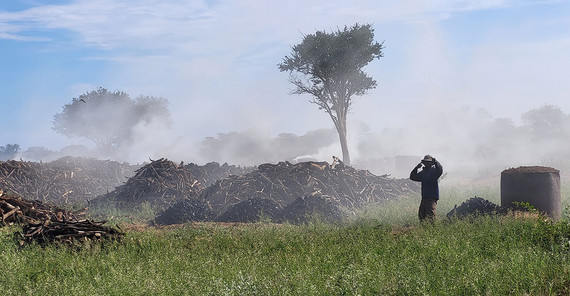Deserts, grasslands, steppes, shrublands, and savannahs – drylands can be found all over the world and make up a substantial 41 percent of the land surface. At the same time, the way they are structured and function is shifting as a result of human-caused climate change. One of the most striking transformations that can be observed in the world's drylands is the increasing spread of woody plants, especially in ecosystems dominated by grass – making them less and less usable as pastures.
“In order to predict and steer the effects of global changes on ecosystems, it is therefore crucial to understand the factors that influence woody vegetation in drylands, which are expected to be among the ecosystems most affected by climate change,” says Dr. Liana Kindermann, one of the Potsdam-based co-authors of the study.
In its large global field study, the international research team investigated numerous factors that influence the occurrence of woody species – including biotic interactions, spatial and temporal fluctuations in the availability of resources due to climate and soil factors, and disturbances of natural processes caused by fire or grazing. In the process, they demonstrated that climate, soil properties, and grazing have the greatest influence on the woody plant population. When the amount of rain per year increases in areas where the soil has a low water-holding capacity, woody species profit from this and spread. This is also true for temperature: As average temperatures rise, tree cover increases – up to an average annual temperature optimum of 15 degrees Celsius. If temperatures continue to rise, tree cover tends to decrease again. Last but not least, the study showed that grazing with certain animal species advances the transformation of drylands: Where intensive grazing with horses or cattle takes place, woody cover increases; with increasing grazing pressure from goats, it decreases.
However, the study also found that the processes were highly complex, as Prof. Dr. Florian Jeltsch from the University of Potsdam emphasizes: “Our analysis shows that several influencing factors and their interactions must be considered simultaneously in order to accurately predict and, ideally, control vegetation changes.”
Link to publication:
Biancari, L et al, Drivers of woody dominance across global drylands, Science Advances, DOI: www.science.org/doi/10.1126/sciadv.adn6007
Photos:
2024_096_Photo1_FieldWork_SouthAfrica: Potsdam researchers in the groups of Prof. Dr. Anja Linstädter and Prof. Dr. Florian Jeltsch from the Institute of Biochemistry and Biology contributed their field data from drylands in South Africa and Namibia to the global study. Photo: Anke Frank
2024_096_Photo2_BushEncroachment_Namibia: To combat the increasing dominance of woody plants, charcoal has been produced in Namibia's savannahs for some time. Select invasive species are removed in the process with the aim of improving the productivity of pastureland. Photo: Anja Linstädter
Contact:
Dr. Liana Kindermann, Institute of Biochemistry and Biology, Biodiversity/Systematic Botany Working Group
Phone: +49 331 977-1904
E-Mail: Liana.Kindermannuuni-potsdampde
Media information 14-10-2024 / No. 096


